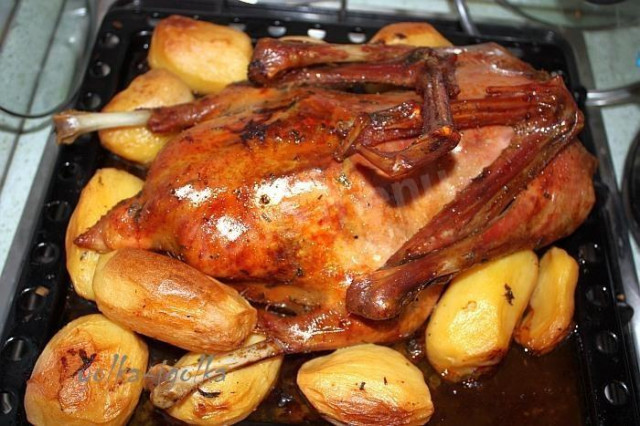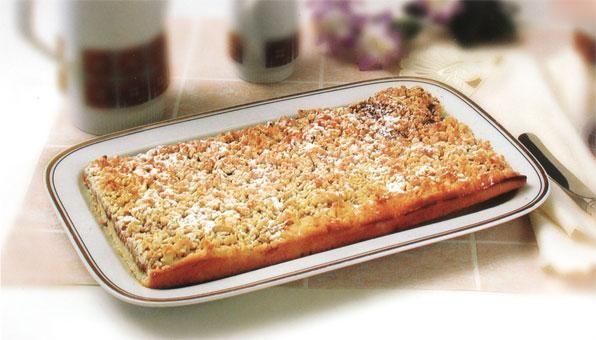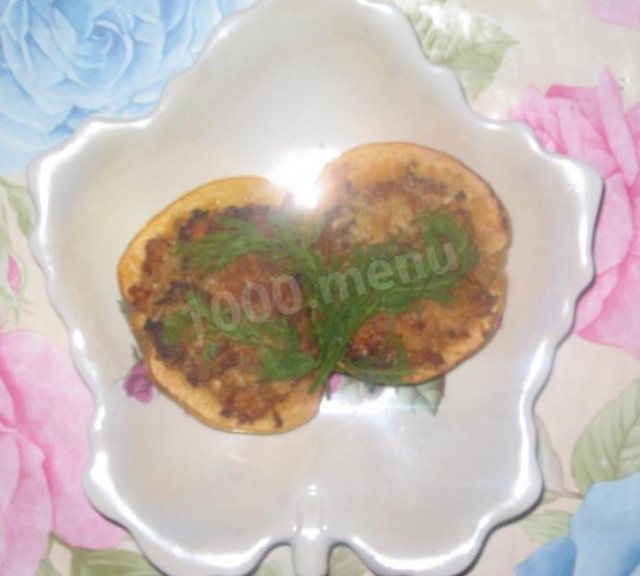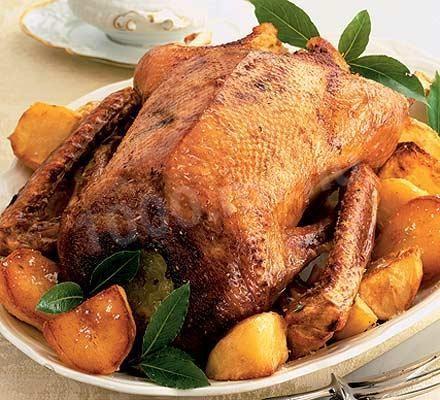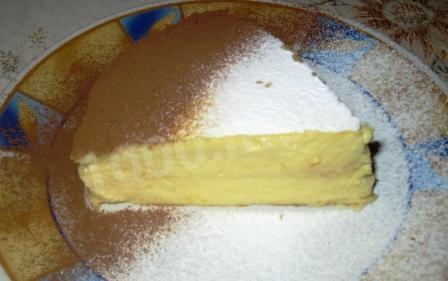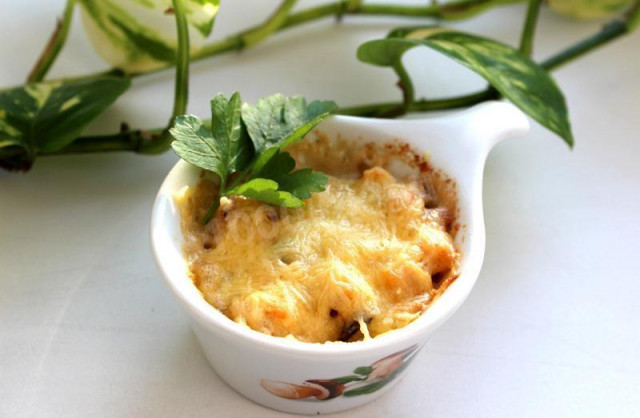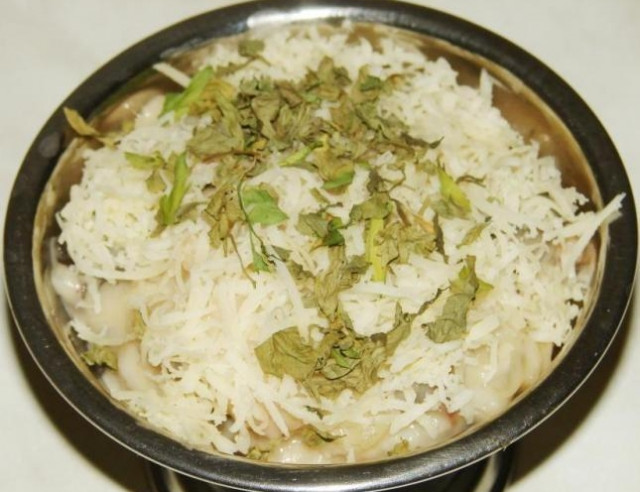Composition / ingredients
Cooking method
We will need a not too large goose carcass, which we will bake entirely in the oven. This recipe is designed for cooking goose without filling. That is, the New Year's goose is baked "empty", and then you can add any side dishes to it – vegetable or cereal.
First, the goose needs to be gutted and cleaned. Then rinse and dry slightly. It is better not to remove the skin from the goose, and therefore it is not bad to tar it. Now chop the garlic and grind it with salt. You can add different spices and ground pepper to the mixture. We make incisions in the skin (the more often, the better) and put garlic and salt in them with our fingers. The inside of the goose can also be smeared.
Next, we take the bottle, put it in the carcass, on the sides inside we also put a few bay leaves. And we wrap the legs of the goose with the neck of the bottle. If necessary, you can sew up the hole. The main thing is that the bottle does not pop out during cooking, and the goose would bake, "keeping the shape". Sprinkle the goose with vinegar and leave for half an hour.
We put the carcass in a goose coop, pour three quarters of a glass of water on the bottom. And put it in an unheated oven for about three hours. In the process of cooking, the goose is watered with the released juice.
Such a New Year's goose is served to the table on a platter in its entirety, and on the sides it is decorated with a side dish. I usually use just round potatoes fried in the oven, sprinkled with dill.
Caloric content of the products possible in the composition of the dish
- Goose fat - 930 kcal/100g
- Goose of the I category - 238 kcal/100g
- Goose II category - 317 kcal/100g
- Garlic - 143 kcal/100g
- Bay leaf - 313 kcal/100g
- Wine vinegar (3%) - 9 kcal/100g
- Vinegar 9% - 11 kcal/100g
- Balsamic vinegar - 88 kcal/100g
- Apple vinegar - 14 kcal/100g
- Vinegar - 11 kcal/100g
- Salt - 0 kcal/100g
- Water - 0 kcal/100g
- Spices dry - 240 kcal/100g
- Pepper - 26 kcal/100g

